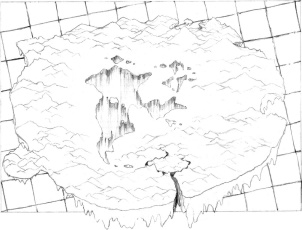Mano a Mano:Adventures
Adventures[edit]
The action of a role-playing game plays out in a setting called an adventure. An adventure could be a single battle or a series of battles, a haunted castle full of secrets, a story which the players can influence through their characters' actions, or an open-ended scenario where players choose which goals their characters work toward. A campaign is a complex adventure which requires players to meet together for several sessions of playing, or a series of simple adventures using the same characters.
Creating Adventures[edit]
To create an adventure, you'll need a system for recording ideas and organizing information such as a notebook and pencil or a word processor. You may need hex mats or graph paper to create maps. Templates, occupations, ability and equipment lists can be designed on paper or using office software. Blank character sheets can be printed or copied for creating templates and characters. Equipment lists can be created using with detailed descriptions of each item or a single equipment list. Important non-player characters (NPCs) should have character sheets, especially characters the players' characters can fight. (See Character Creation and Game Design/Equipment.)
Some adventures are a sequence of challenges like an obstacle course which forces the characters to follow a story line, but letting the story develop naturally in an environment that encourages the players to play their characters creatively is usually more engaging.
Adventures can provide opportunities for player character development, improving the characters' builds, abilities, equipment or occupations. These opportunities can depend on the choices players make, the actions of their characters, the outcome of the adventure, specific experiences or general experience gained in the adventure. For example, an adventure might have a secret old hermit that the player characters can discover and train with, thus giving the player characters extra CP to improve their abilities. As another example, after defeating a particularly difficult enemy, player characters might discover treasure that their fallen foe was protecting. (See Character Development.)
Sourcebooks[edit]
A sourcebook is a document with information for creating and playing adventures. A sourcebook can contain a complete adventure or compaign. A more general sourcebook might describe a setting used in several adventures, such as a sourcebook for generic fantasy adventures. A more specific sourcebook might focus on one detail of a setting, like a book with extra monsters for a scenario. Some sourcebooks provide material for adventures in multiple settings. For example, a sourcebook for characters with thieving and burgling skills might apply to both modern adventures and fantasy campaigns.
A sourcebook containing a complete adventure will include a detailed description of the setting, what kind of characters the the players should control, descriptions and character sheets for NPCs, maps and diagrams, and rules for how the action of the adventure should play out. The sourcebook may contain a detailed inventory of the items in every room and the goods for sale in every store. A good adventure sourcebook should not leave the GM in a situation where he has to invent new material during the game.
Limitations[edit]
Adventures can limit PC templates, occupations and CP Value. Some adventures are more suited to characters with low CP and may be too easy for more powerful characters. Other adventures are more challenging and better suited to characters with more CP.
Templates, equipment, new characters and character development have limitations which you may want to modify for specific games. A superhero game for example might allow characters to have more qualities, greater abilities, and more speed, agility, strength and toughness. A game where PCs are average folks or inexperienced kids might have lower ability limits and allow less speed, agility, power or toughness development. (See Game Design/Templates, Game Design/Equipment and Character Creation.) The normal limitations are:
- Templates can have no more than 3 speed.
- Template agility is between -5 and 5
- Templates can have no more than 5 levels of template abilities.
- Equipment can have no more than 2 offense.
- Equipment can have no more than 2 control.
- The maximum ability of new characters is 4 plus their template ability.
- Characters can later develop ability levels up to 10 plus their template ability.
- New characters can have only a few qualities their template does not have - all of them disadvantages.
- New characters can have no more than double their template speed or 1 plus their template speed, whichever is less.
- The maximum agility of new characters is 2 plus their template agility.
- A new character can have 0%, 50%, 100% or 200% more strength than his template, depending on the template's variability.
- A new character can have 0%, 50%, 100% or 200% more toughness than his template, depending on the template's variability.
- Through training and experience, characters cannot develop any more qualities, speed, agility, strength or toughness than a new character of the same template can start with.
